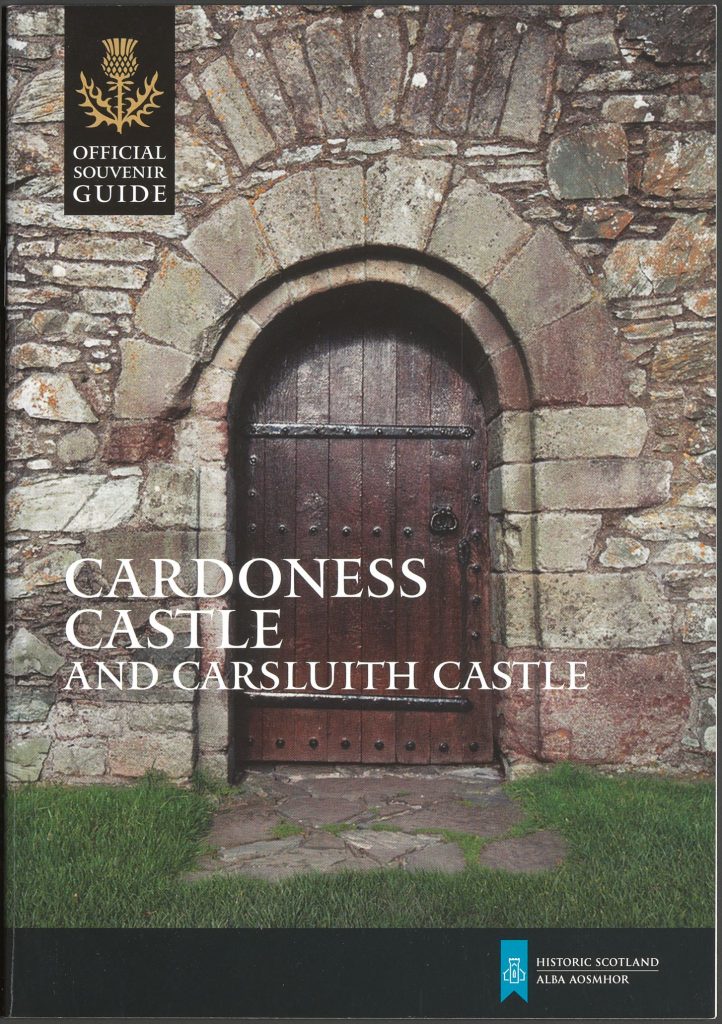Cardoness Castle
Castle information:
Cardoness Castle is a striking late 15th-century tower house perched on a rocky promontory overlooking the Water of Fleet in southwest Scotland. Built around 1475 by the influential McCulloch family—who acquired the land circa 1460—the castle served as both a fortified residence and a symbol of feudal authority. Though the site was first recorded in 1220, the surviving structure reflects the turbulent political landscape of medieval Galloway, shaped by family rivalries and regional conflict.
The castle’s six-storey tower was constructed with thick stone walls, narrow slit windows, and gun loops for defence, yet offered considerable domestic comfort. The vaulted ground floor housed a food cellar and a prison, while upper levels included a great hall with a grand fireplace, salt box, and display niches, as well as private chambers, garderobes, and attic spaces. A notable feature is the “murder hole” above the entrance, used to defend against intruders or lower supplies.
The courtyard once accommodated outbuildings such as stables, kitchens, and a brewhouse, though only foundations remain after partial reconstruction in the 1920s. The castle’s tidal location further enhanced its defensibility before 19th-century drainage works altered the landscape.
By the 17th century, the McCulloch family had lost the castle to the Gordons. In 1697, Godfrey McCulloch was executed for murder—one of the last noblemen to die by guillotine in Scotland. In 1927, Cardoness Castle was brought under state care, preserving its legacy as both a historical stronghold and a vivid record of noble life in medieval Scotland.
Digitised content:
The digitised content for Cardoness Castle is drawn from three archival series. The Bogdan files (SCA/2) include a detailed guidebook providing insights into the castle’s architectural layout, domestic features, and historical connection with the Broun family. The Kerr slides (SCA/5) offer exterior photographs capturing the tower’s structure, defensive design, and dramatic setting above Wigtown Bay. The Maxwell-Irving photographs (SCA/6) focus on key architectural details such as gun-loops, slop sinks, buffet recesses, and tower features. Together, these materials offer a layered visual and textual record of Cardoness Castle’s historical and architectural significance within the Scottish heritage landscape.
Bibliography:
Books and Academic Sources
Maxwell‑Irving, A.M.T. (2000) The Border Towers of Scotland: Their History and Architecture. Blairlogie: Creedon Publications, pp. 53, 124.
Archival Guidebook
Historic Scotland (n.d.) Cardoness Castle and Carsluith Castle: Official Souvenir Guide. Bogdan Archive, SCA/2, Scottish Castles Association Archive, University of Stirling Special Collections. [Accessed 26 June 2025].
Web Resources
Scottish Castles Association (n.d.) Cardoness Castle. Available at: https://www.scottishcastlesassociation.com/events/past-events/kirkcudbright-2008.htm (Accessed: 26 June 2025).
Trove Scotland (n.d.) Cardoness Castle archive records. Available at: https://www.trove.scot/place/63632 (Accessed: 26 June 2025).


